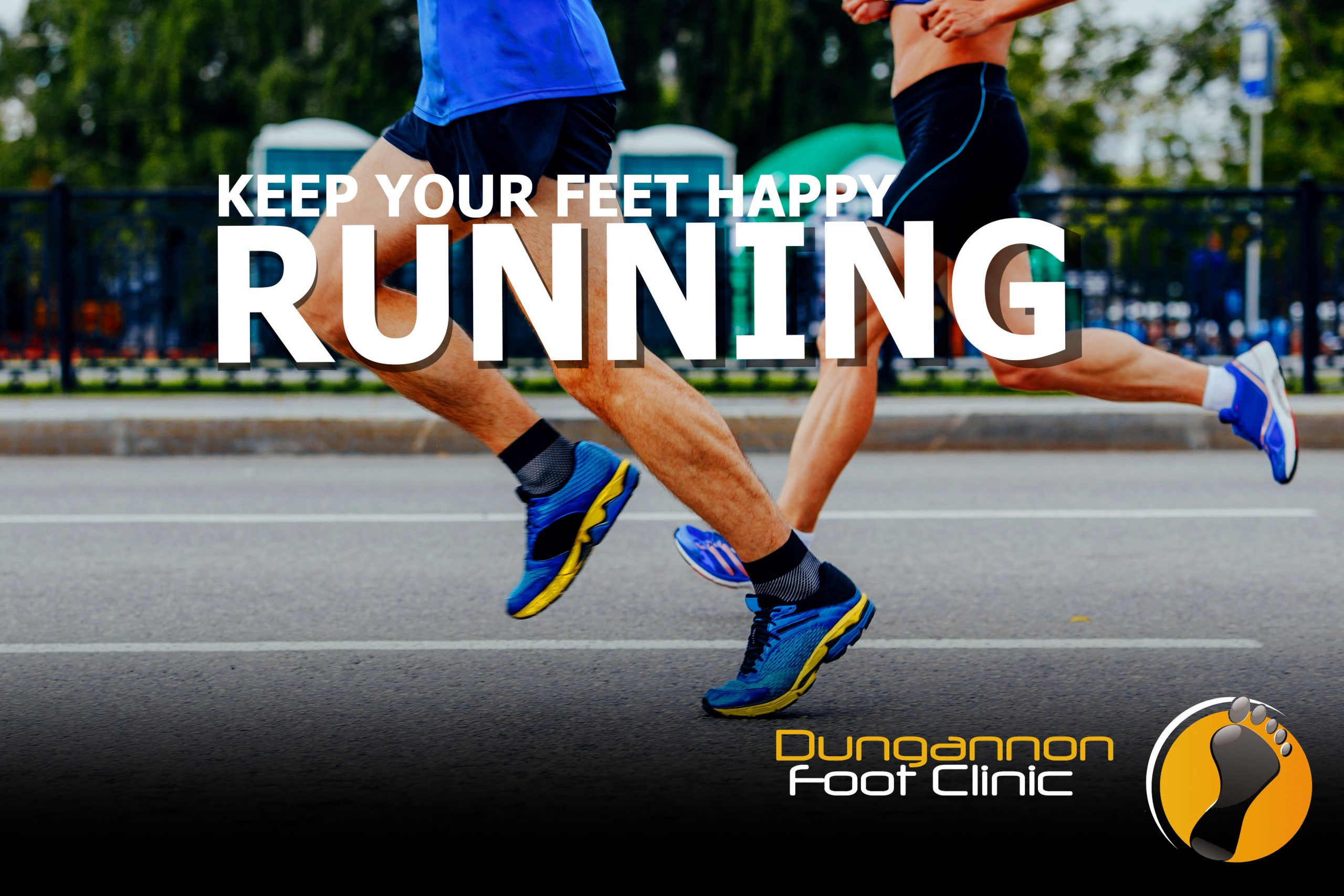
One of the positives from the lockdown was the amount of people taking up running as a pastime, it was great to see people of all abilities start running. For many, it started with the run 5, nominate 5 and donate 5 challenge and that kick started many people’s interest. Running is really beneficial for your mental and physical health but I’m going to advise how to keep your feet happy whilst running. Get the basics right and you will have many miles of pain free running!
By far the most important piece of kit for a runner is trainers- you only get one pair of feet so look after them!
Which shoes should I buy?
There are many great brands available to the everyday runner, you are spoilt for choice. The most important factor is finding a comfortable pair of trainers that suit your feet, suit your running style and are suitable for the type of running you plan to undertake. You may try several pairs before you find the one!
Top tips when buying trainers.
• Get your feet measured in a store to find out your exact size.
• wear the socks you intend to run in.
• Ensure you have a finger width length from your great toe so that
that you do not damage your toes while running.
• It is advisable that after 350- 400 miles approximately to replace
your trainers as the materials will have become less supportive.
Good news is that the shoes can still be worn for everyday use just
not for running.
•NEVER wear new running shoes for a long run- always break them in for the first 50- 80 miles
Socks are also important when it comes to preventing blisters. Socks should be breathable in-order to wick moisture away from your skin. If you have very sweaty feet or hyperhidrosis you may consider an antiperspirant foot spray.
Blisters can also be due to abnormal bio-mechanics. By consulting a podiatrist the movements and function of the feet can be addressed with foot orthoses and footwear advice.
One thing I am constantly asked is should I burst my blisters?
While blisters can self rupture, I advise patients not to intentionally burst blisters due to a risk of infection. It is important to dress a burst blister using sterile dressings on clean skin and remove further friction by using blister pads.
Seek podiatric care where necessary especially if there are any signs of infection, redness, bad smell, pus or swelling.
There is nothing more frustrating than having to tie your laces several times during a run. You’d be surprised how laces affect the structure of the shoe and that can affect your form. Proper lacing technique also prevents slippage which can result in blisters or bruising to the toenails. Lace your trainers firmly using the top eyelets to secure the laces.
In order to reduce the risk of an overuse injury it is important to Increase your weekly mileage or time spent running gradually by no more than 10% per week. Ensure sufficient rest or easy days are included in any training program as this will allow the body time to recover and adapt to the demands of training.
Every step a runner takes the foot generates forces equivalent to at least three and a half times the runner’s body weight. This force is absorbed by the foot and lower limb and transferred to enable forward movement. Overuse injuries may result from this repeated stress of body tissues and can often be associated with poor biomechanics, weak muscle groups and reduced flexibility.
A biomechanical examination of the foot and lower limb can identify possible foot types and structural problems which may become a cause of pain and result in injury in prolonged running.
Functional foot orthoses for your trainers can be effective if a lower limb abnormality is identified to reduce excess stress and strain and possible overuse injury.
If you find you’re having continuous problems with your feet even with following this advice, get in touch with us and we will advise what treatment is needed. Give us a call on 028 8772 4466 to arrange an appointment or if you need further information.